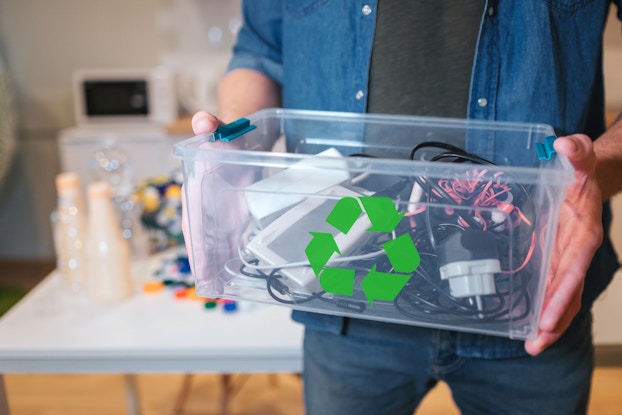
Practicing environmentalism at your small business isn’t just good for the planet; it’s good for business, too. A survey by Deloitte in 2021 found that one in three consumers claimed to have stopped purchasing from certain brands due to ethical or sustainability-related concerns. Especially for younger customers, the environment is a major factor in purchasing decisions.
Sustainability doesn’t have to be complicated or expensive. These simple changes can help your business lower its environmental impact — often while saving money.
Keep working remotely
Many businesses switched to remote work during the pandemic for health and safety reasons. Continuing to offer a remote work option, however, can help lower your business’s carbon footprint. Remote work reduces your office’s light and energy use, as well as the emissions that result from the commute that your team would normally take to get to work. Doing so also helps you save on utilities. Alternatively, you can end your office lease altogether and put that money elsewhere.
If some members of your team prefer working in-person, there are still ways to cut down on energy use. “Create a rotating schedule for employees that divvies up their time between the office and working at home; this way, you’ll conserve energy by limiting the amount of people on-site while still allowing employees to be on location as needed,” wrote Entrepreneur.
[Read more: Go Green! 5 Tips for Growing a Sustainable Small Business]
Focus on plastic
Single-use plastic is one of the biggest burdens on our planet. By 2050, we will have more plastic than fish in our oceans. And, according to McKinsey, public awareness of plastic waste in the environment has increased to an all-time high over the past 12–24 months. If you choose to focus your sustainability efforts on one single area, it should be reducing the use of plastic throughout your business.
There are many ways to tackle plastic. Give your employees reusable water bottles to try to reduce the use of plastic bottles. Look at your packaging to see if there are better, more sustainable materials you can use. Set up recycling stations and provide training so your team members are aware of what plastics can be reused. Eliminate plastic bags at your checkout, or incentivize customers to use reusable bags. Be relentless in your pursuit of ridding your business of plastic, and your customers will take notice.
Understanding your supply chain’s impact on the environment leads to improvements in energy efficiency and a host of logistics optimizations.
Ben Winter, VP of growth and marketing at Fairmarkit
Recycle old electronics
Electronic waste is a huge problem. The EPA estimates that Americans throw away two to three million tons of electronics yearly. Luckily, recycling old electronics is easier than ever. Some options include:
- Sell them: After you’ve cleared any sensitive information from your old laptops or desktops, try selling them on sites like Craigslist, eBay or Gazelle. You may be surprised how many people are in the market for a used electronic.
- Recycle them: More and more often, many municipalities offer electronic-waste recycling opportunities at certain times of year or in a few locations. Alternatively, brands like Apple, Amazon, Gazelle, Best Buy and Staples are willing to buy back or recycle your old electronics for you.
- Donate them: Some nonprofits are more than happy to take old laptops off your hands. Get a receipt and you may be able to write off your donation on your tax return.
Recycling, donating and selling your old electronics is a good way to bring in a little extra cash and declutter your business while helping the environment.
Work with sustainable partners
Finally, look to your supply chain to find opportunities to minimize your carbon footprint. Procurement is one area in which you do have a fair amount of control, depending on your budget.
“Understanding your supply chain’s impact on the environment leads to improvements in energy efficiency and a host of logistics optimizations. And of course, improving profits means adding financial value and cost savings to your organization,” wrote Ben Winter, VP of growth and marketing at Fairmarkit.
[Read more: How to Become a Certified Sustainable Business]
Reviewing your supply chain is more time-consuming than some of the other tasks on this list, but it can help your business gain efficiency in addition to sustainability. See if there are ways that your suppliers can decrease waste in their delivery process, establish environmental standards in their manufacturing process, reduce water and energy use or use recycled materials in their packaging. Each of these areas can lead to cost savings, which should translate into better rates for your business.
CO— aims to bring you inspiration from leading respected experts. However, before making any business decision, you should consult a professional who can advise you based on your individual situation.
Follow us on Instagram for
more expert tips & business owners’ stories.
CO—is committed to helping you start, run and grow your small business. Learn more about the benefits of small business membership in the U.S. Chamber of Commerce, here.









